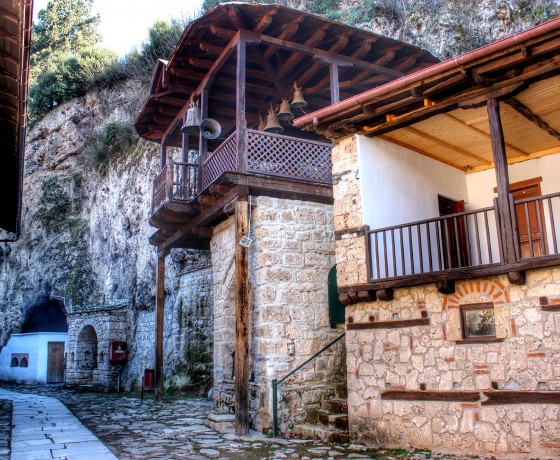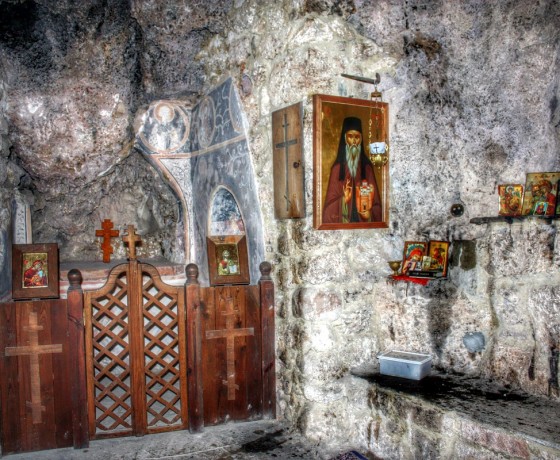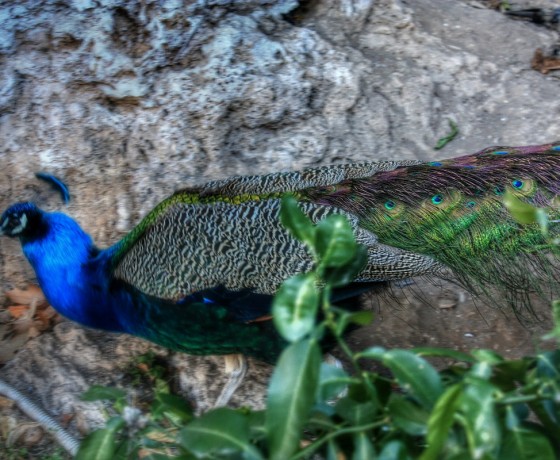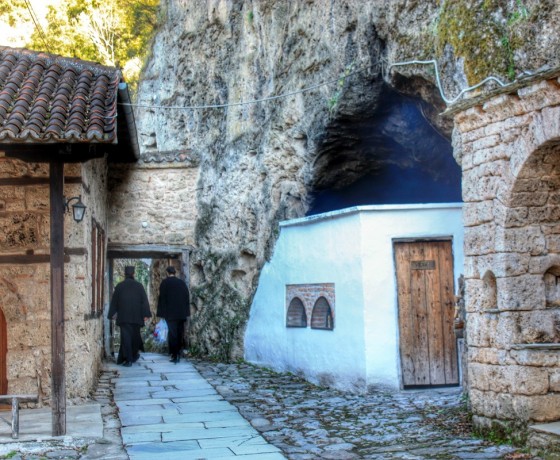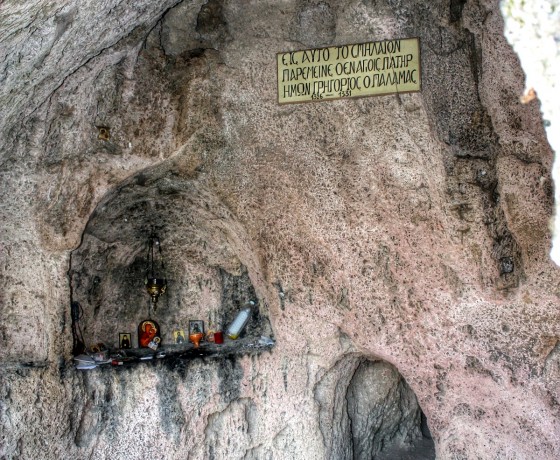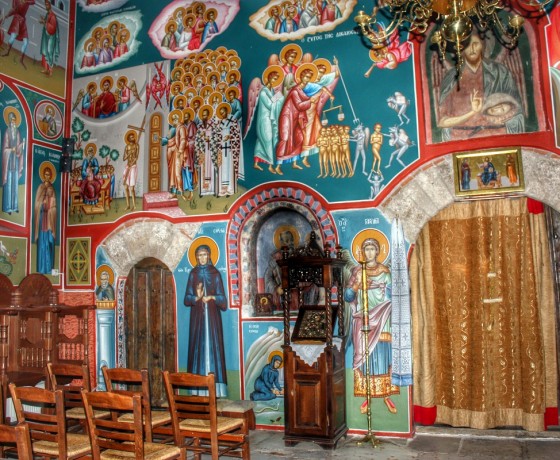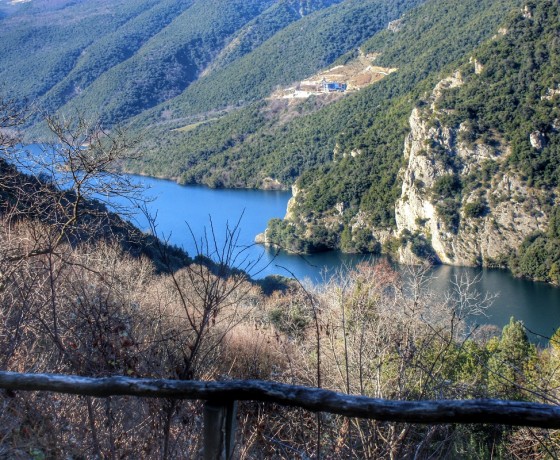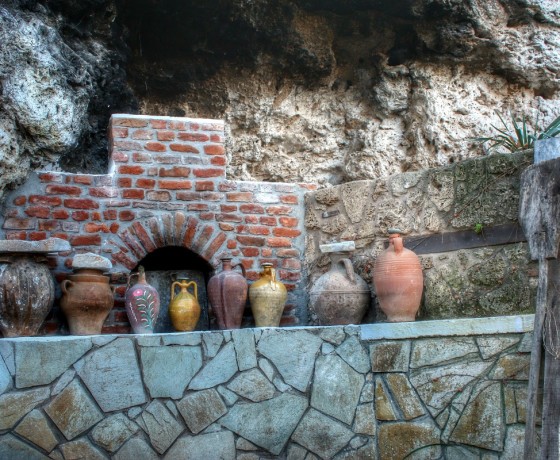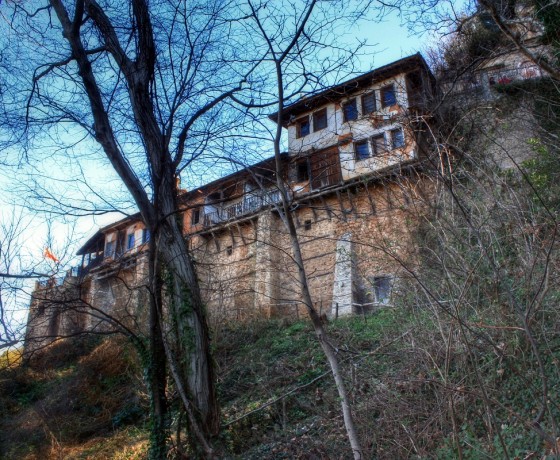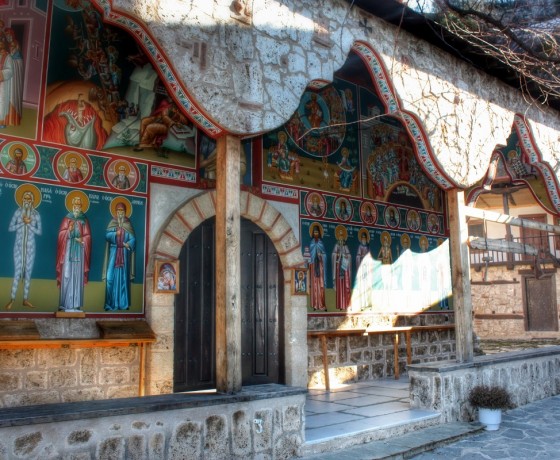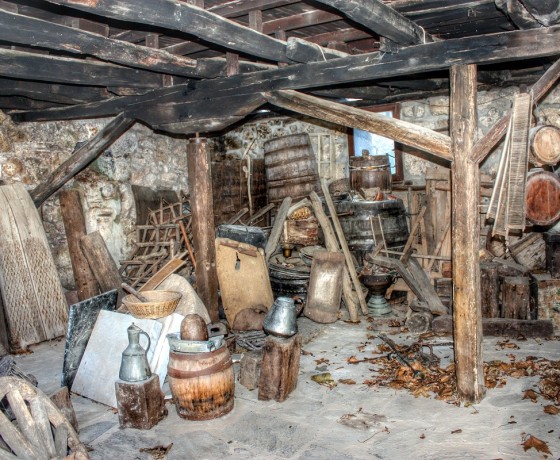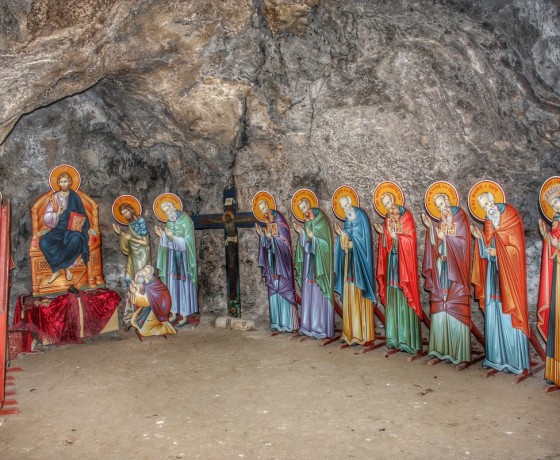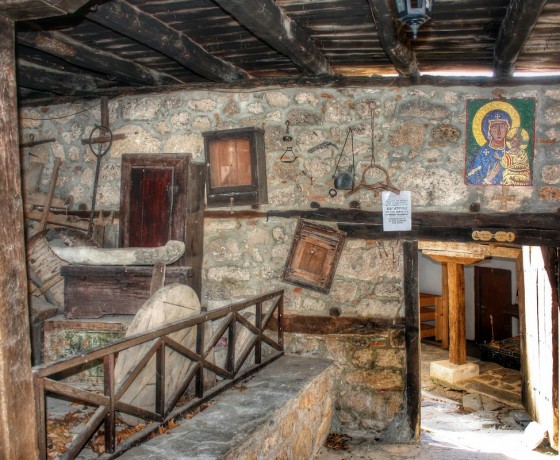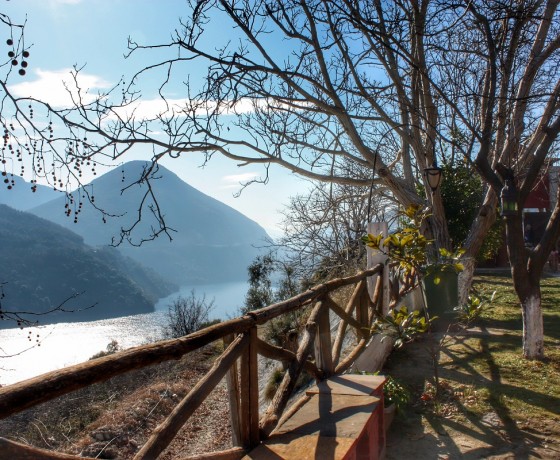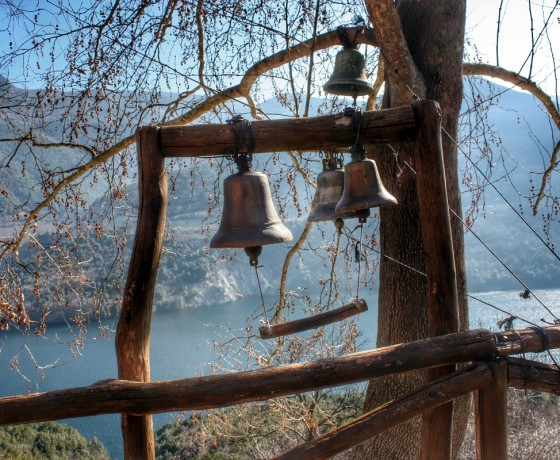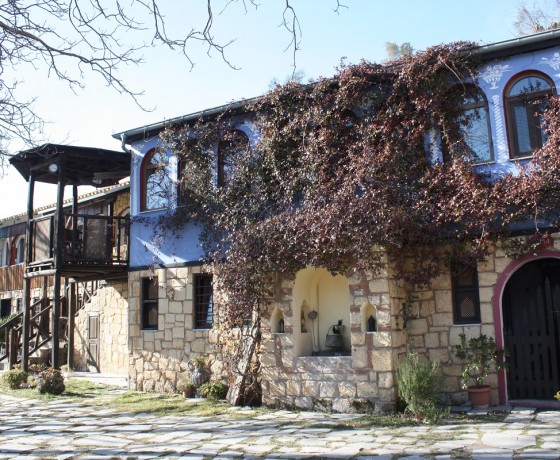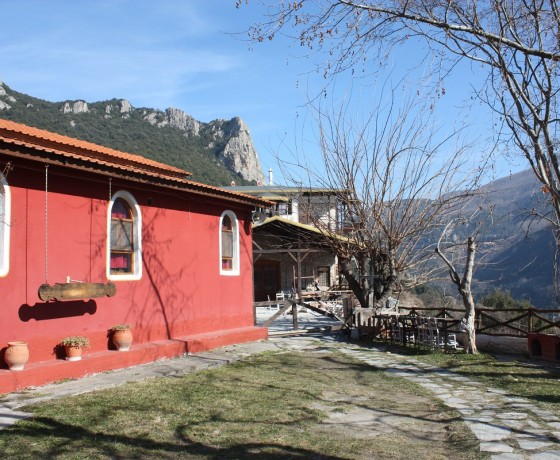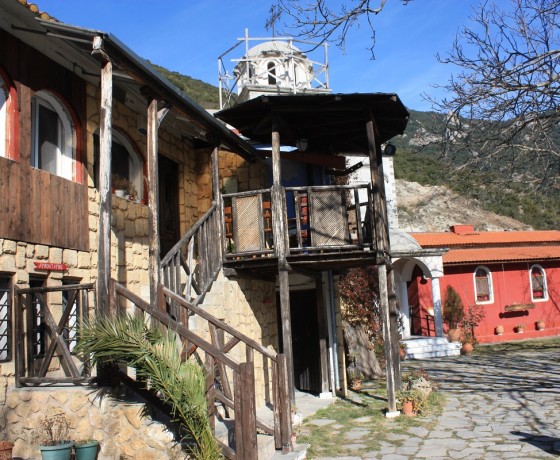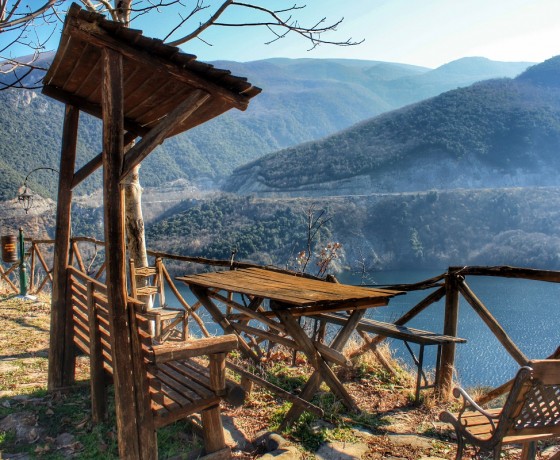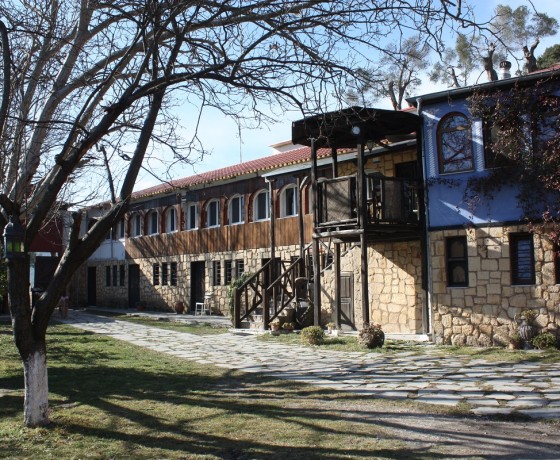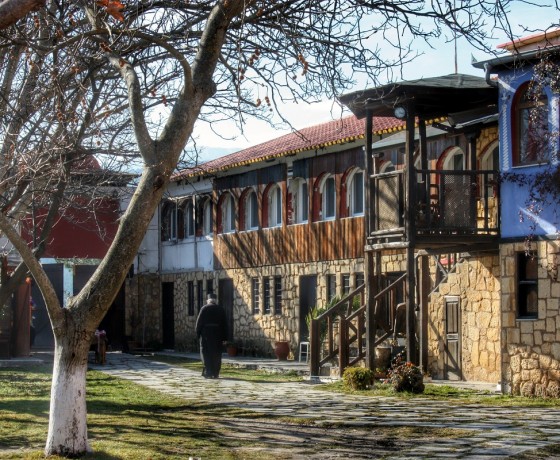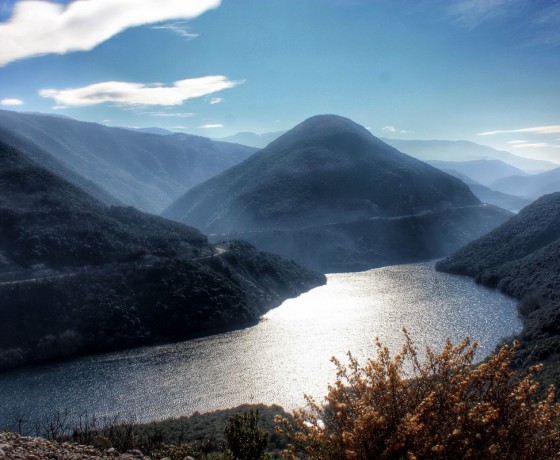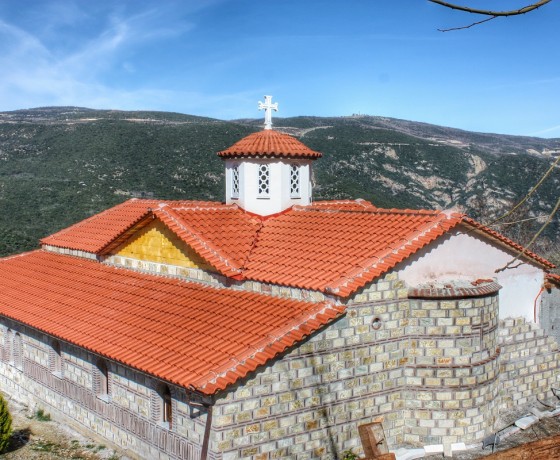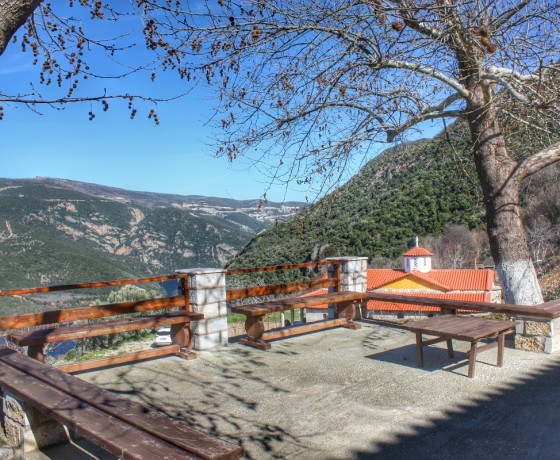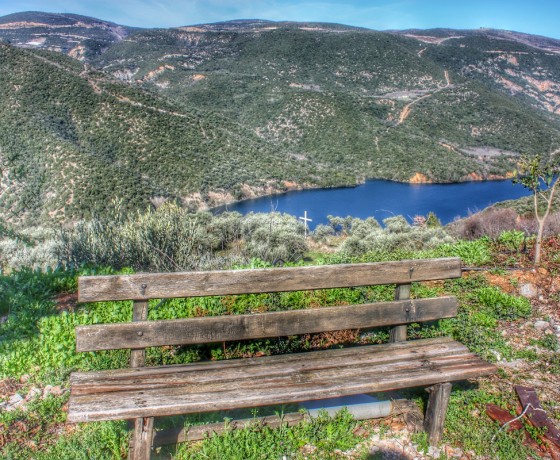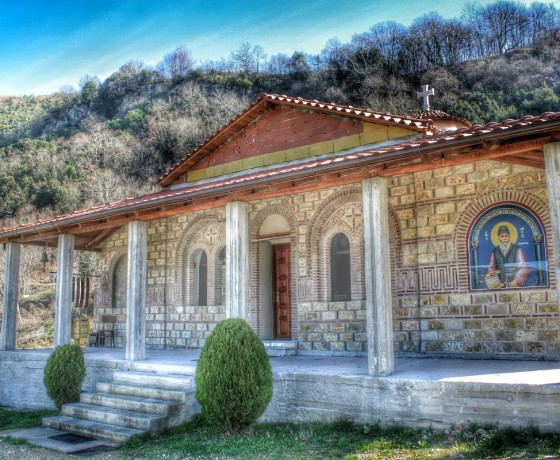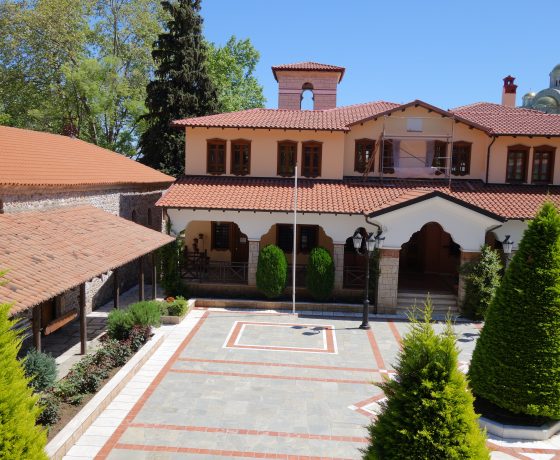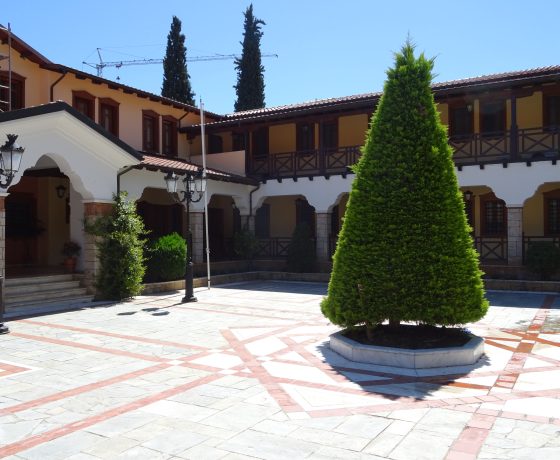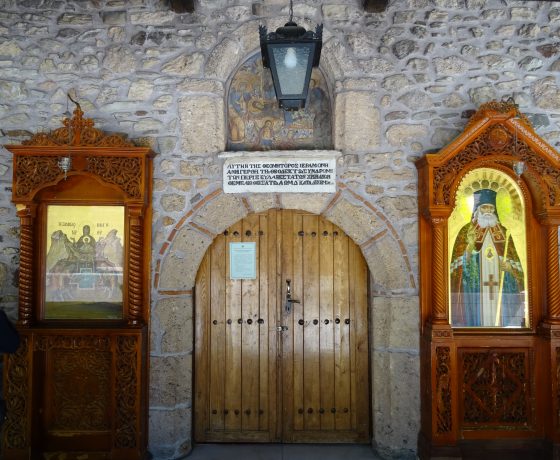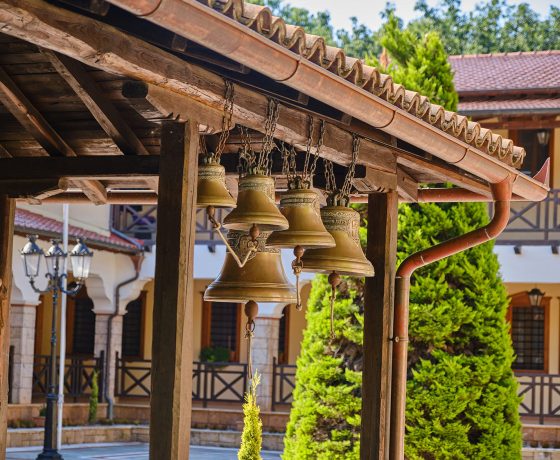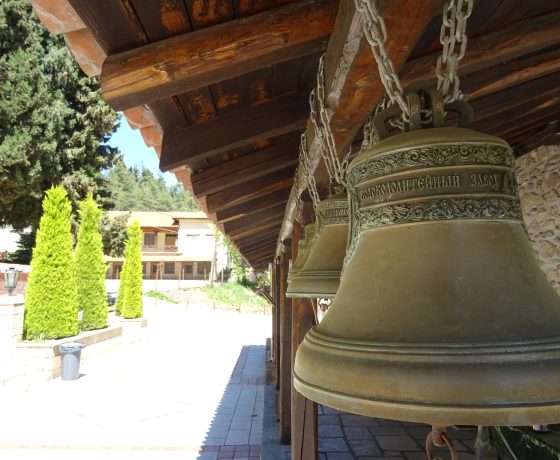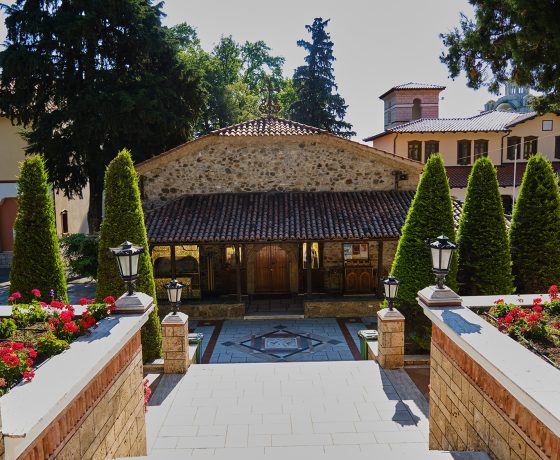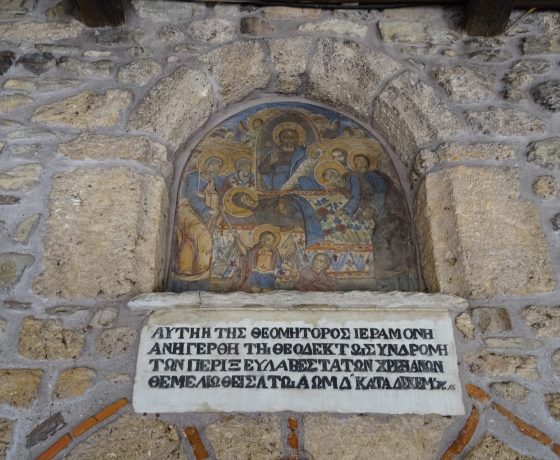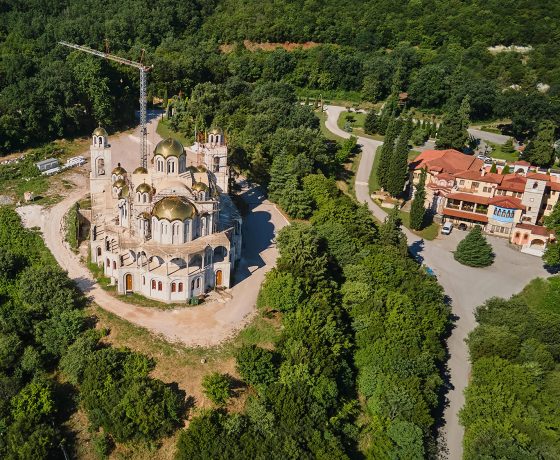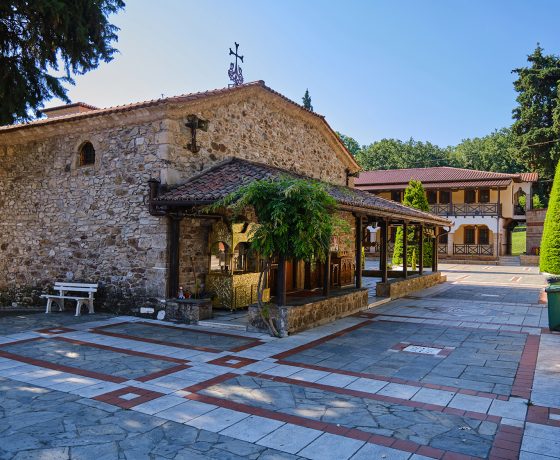Monasteries and Pilgrimages
Monasteries and Pilgrimages
The buildings of archaeological and architectural interest belong to the Byzantine Antiquities and are mainly churches and monasteries that operate as places of religious, historical and cultural value, such as (http://www.imverias.gr/) :
- The Holy Monastery of Panagia Dovra and the newly built Temple of Saint Loukas of Simferopol
- The Holy Monastery of Panagia Soumela
- The Holy Monastery of Saint John the Baptist
- The Holy Monastery of Panagia Kalipetras
- The Holy Monastery Moutsialis
- The Holy Monastery of Prophet Elias Asomaton
The Holy Monastery of Panagia Dovra.
The monastery is built between two hills in idyllic natural scenery surrounded by dense vegetation. The monastery is dedicated to the Assumption of Virgin Mary and is one of the most ancient temples of the region. The date of establishment of the monastery remains unknown but it is assumed that it was built in the 12th century. However, the first confirmed testimonials about its operation come from written documents of the 17th century. The monastery has been continuously operational by 1822. In 1995 the monastery was re-founded and now operates as a male monastery. The restoration of the monastery was accompanied by α radical renovation of the buildings, maintaining the old architectural style. In the old church, which is a three-aisled basilica with a wooden-roof and exo-narthex, all the oldest architectural pieces were preserved the elaborated Macedonian wooden roof was renovated and preserved. The windows, the pews and the templum were also replaced. A new building with the same architectural style was constructed including the guesthouse and the monks’ cells. The Sanctify of Zoodochos Spring was also reconstructed and the courtyard was reformed.
For more information:
The Holy Monastery of Panagia Soumela
It is the spiritual centre of the Pontian Hellenism and is located near the village Kastania. Panagia Soumela which is the symbol of the Ponte is embraced by history, tradition and legend. Evangelist Luke was the one who carved the wood into Virgin Mary’s figure. The wooden icon was found after Evangelist Luke death in Athens and for this reason it was given the name Virgin Mary “The Athenian”.
At the end of the 4th century (380-386) the monastery of Panagia Soumela was built by the monks Varnava and Sofronios. The two monks, with their faith, persistence and dedicated work, managed to build the church of Soumeliotisa which is carved into the mountain. The unexpected uprooting depopulated the memorable Ponte as well as Vigla. Along with the population exchange the holy relics were granted and in 1931 Ambrosios the Soumeliotis dig them up and brought them to Greece after Eleftherios Venizelos negotiations with the Turkish government of Ishmed Inonou.
Since 1952 a new period started; the Greek history of Panagia Soumela. In 1951-1952 the icon was handed to the union “Panagia Soumela” of Thessaloniki which started the construction of the monastery in a flat place at Vermio, above the village of Kastania that had granted 500 acres of land for the construction of the Pilgrimage.
For more information:
The Holy Monastery of St. John the Baptist – Skiti Veria.
The Holy Monastery of St. John the Baptist is only 13 klm away from the centre of Veria on the way to Vergina. The Holy Monastery of St. John the Baptist –Skiti Veria is located after the dam of River Aliakmonas and parallel to the river. The valley of Alikmonas has become a cradle of Monasticism since the byzantine era. Monasteries, caves, huts, and hermit monasticism are some of the forms of the monasticism life developed in the valley of River Aliakmonas. The holy stravropegic Priory Monastery of St. John the Baptist is also known as Skiti Veria and continues to prosper near the bank of the river on the north hillside of the Pierian Mountains.
In the Holy Monastery Antonios the patron saint of Veria, Klimis the Achbishop of Achrida, St. Gregory Palamas with his eleven pupils, St. Theodosios in Kelivarofo in Bulgary, St. Theofanis patron saint of the neighbouring Naoussa and St. Theonas Achbishop of Thessaloniki all lived for a while there. The Elder of the priory “Dionysios” from The Mount Olympus, Nicanor’s of Zavorda bosom friend and the equal to the Apostles Cosmas of Aetolia.
For more information:
The Holy Monastery of Panagia Kallipetras
Or else the monastery of the Macedonian Struggle is located in the region of Rachia in Veria near the River Aliakmonas. It is honoured at the birthplace of the Virgin Mary and the name Kalipetra (beautiful stone) derives from the rock that shades it (Jamala in Turkish). It is one of the oldest monasteries with the oldest indication of its existence before 1100.
The monastery was prosperous until the end of the 18th century and had a community of 37 monks. In 1822 it was totally destroyed and the monks were beheaded. In 1907 during the Macedonian Struggle because of monks’ help towards the Greek party, priest Stavros and his companion were executed and abbot Ignatios with his companion were also convicted to death by dismemberment. In 1941 an aspiring shepherd burned all the important buildings and the church. From that time only the ossuary and the relics of about 120 monks survived. The monastery has been recently renovated; it is at presently operating.
For more information:
The Holy Monastery Moutsialis
It is the Monastery of Skitis of Veria, known since the period of the Turkish Occupation. It is honored on the day of Metamorphosis (Transfiguration) of the Savior. The buildings that surrounded its Catholic survived Until the World War II. The region due to the destruction of the rain waters was named “Moutsiali” which means wet. In the monastery there is a preserved piece of the relic of St. Symeon the Stylites. The monastery occasionally provided accommodation for various monks and nuns. The last two nuns were Gregoria and Makrina who abandoned the monastery due to the Civil War in Greece (1946-1949). Today it operates as a nunnery with Sister Portaitisa as Elder.
For more information:
The Holy Monastery of Prophet Elias Asomaton
The monastery of Prophet Elias is located at the left bank of the River Aliakmonas near the village Asomata, 8 klm from Veria. It is one of the oldest monasteries of the region and today only a small single-aisle basilica still remains. It is assumed that the monastery was built at the end of the 16th century. Many inscriptions refer the year 1570 as the date of the inauguration as well as that the temple was originally dedicated to Virgin Mary and not Prophet Elias. As far as the architecture is concerned, the alcove of the Sanctum is three-sided externally while it has a decorative area with beveled edged mudbricks that surround the three sides externally. Despite of the heavy damages over time it is still in good condition and well preserved. The special characteristic of the monastery that gives additional value is the mural paintings of exquisite artistic style preserved in the temple of which the most important are those in the Sanctum. The iconographer is still unknown, although the style and technique make us understand that the temple had been decorated by a painter related to the group of painters who worked on a lot of temples in Veria. The monastery of Prophet Elias was destructed during the Revolution of Naoussa in 1822 like many other monasteries of the area. Today only the catholic of the church has survived.
For more information:


